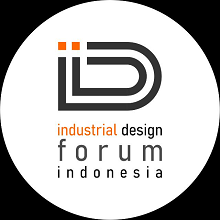MANGA MATRIX: SEBUAH PENDEKATAN DALAM PERANCANGAN VISUALISASI KARAKTER PADA PROJECT INTEGRATED INTERNATIONAL EXHIBITION INDONESIA-JAPAN SEBAGAI PERWUJUDAN STANDAR IDENTITAS MASKOT
Abstract
This research focuses on developing visual identity through a mascot as an effective strategy to support the branding of international events. The study centers around the design of SWEN, the mascot for the Brawijaya International Design Exhibition (BIDEA) at Malang Creative Center (MCC), which represents the values of innovation, creativity, and cross-cultural collaboration between Indonesia and Japan. The development of this mascot applies the Manga Matrix theory framework by Hiroyoshi Tsukamoto, integrating character design elements such as Form Matrix, Costume Matrix, and Personality Matrix. Additionally, a design thinking approach was used to ensure the design centered on user needs through the stages of empathize, define, ideate, prototype, and test. The first stage, empathize, involved interviews with manga artists and character designers to explore the cultural values to be depicted. The second stage, define, focused on clearly articulating the problem based on the insights gathered. The third stage, ideate, generated initial ideas and design concepts. In the fourth stage, a visual prototype of the mascot was developed for implementation in the exhibition. The fifth stage, test, involved conducting a questionnaire survey among exhibition visitors, designers, and manga enthusiasts to gather feedback. During the three-day BIDEA exhibition at MCC, the study engaged participants through a Likert scale 4-based questionnaire to evaluate the mascot's success. The analysis revealed that over 80% of respondents agreed that the SWEN mascot effectively became a relevant and functional visual identity for the international exhibition. The results of the design were applied in both offline and online media during the Indonesia-Japan international event. The study concludes that combining the Manga Matrix theory and the design thinking approach produced a mascot design that is not only visually appealing but also carries strong representational values. This study contributes to the development of character design for international event branding and reinforces the role of mascots as a tool for cross-cultural communication.
Keywords
Full Text:
PDF (Bahasa Indonesia)References
Brown, T. (2009). Change by design: How design thinking creates new alternatives for business and society. Harper Business.
Cohen, E. (2013). Cultural Bridges and Symbolism in International Exhibitions. International Design Review, 9(2), 72-85.
Duffy, M. (2018). The Role of AI in Cultural Innovation and Design. Journal of Digital Culture, 12(4), 45-60.
Hsieh, H. M., & Chen, Y. T. (2020). The effect of mascot design on brand perception and engagement. Journal of Visual Communication Design, 15(3), 127–139.
Geertz, C. (1973). The Interpretation of Cultures: Selected Essays. Basic Books.
Ito, K. (2019). Manga in the modern world: A cultural phenomenon. Tokyo Publishing.
Kawai, M. (2001). Japanese Culture and its Global Influence. Tokyo: Kodansha.
Kusno, A. (2000). Site and Sound: The Architecture of Indonesia. University of Hawaii Press.
Luchs, M. G., Swan, K. S., & Griffin, A. (2016). Design Thinking: New Product Development Essentials from the PDMA. Wiley.
McDonald, K., & Ali, M. R. (2023). Character design concept art for a cyberpunk themed story. Journal of Animation Studies, 22(4), 56-72.
Napier, S. J. (2007). Anime from Akira to Howl's Moving Castle: Experiencing contemporary Japanese animation. Palgrave Macmillan.
Rochana, A. (2021). Integrasi seni visual dalam promosi budaya lokal di Indonesia. Jurnal Desain Komunikasi Visual, 8(2), 67–78.
Tsukamoto, H. (2004). Manga Matrix: Create unique characters using the Japanese matrix system. Harper Design.
Tsukamoto, H. (1997). Manga Matrix: A Comprehensive Guide to Character Design. Tokyo: Kadokawa Shoten.
Sahlins, M. (1993). Goodbye to Tristes Tropes: Ethnography in the Context of Modern World History. The Journal of Modern History, 65(1), 1-25.
Smith, A. D. (2001). Nationalism: Theory, Ideology, History. University of Nebraska Press.
Sundar, S. S., & Kemp, E. (2023). AI and animated character design: Creativity and interaction in animation. Journal of Digital Media Arts, 17(3), 112-126.
Refbacks
- There are currently no refbacks.
Fakultas Desain dan Seni Kreatif
Universitas Mercu Buana
Gedung E Lantai 4
Jl. Raya Meruya Selatan no.1, Kembangan, Jakarta 11650
Tlp./Fax: +62215871335
Journal International Standard Serial Number (ISSN) Registration:
The Journal is indexed by:
Tools for Citations & Plagiarism Detection:

Ciptaan disebarluaskan di bawah Lisensi Creative Commons Atribusi-NonKomersial 4.0 Internasional
 NARADA: Jurnal Desain dan Seni
NARADA: Jurnal Desain dan Seni

























